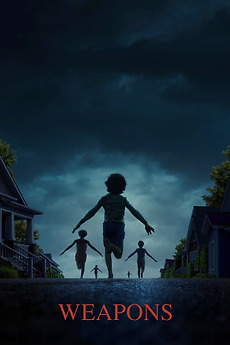With the release of last year’s smash-hit biopic A Complete Unknown, 1960s-80s folk legend Bob Dylan was brought back into the limelight. Music and movie lovers of all generations found themselves grooving along to his famous ballads like “Blowin’ In The Wind,” early electric hits in “Maggie’s Farm,” and especially his most known and influential song “Like A Rolling Stone.” But what a lot of people don’t know is that A Complete Unknown barely missed the cutoff to be part of the anniversary of the most important year in Dylan’s career: 1965.
60 years ago, Dylan released his two most influential albums: Bringing It All Back Home in March and Highway 61 Revisited in August. As shown in the biopic, these albums catapulted him to stardom and solidified his legacy as a new electric era in folk music and a poet. Among general audiences and Dylan fanatics alike, one of these has always been considered better than the other. However, it’s high time that Bringing It All Back Home is recognized as Dylan’s magnum opus, and Highway 61 Revisited should be sent down a few spots in the next album ranking.
To start, there is one major hurdle in Home’s path to the top: the rocking, thrilling, and magically written “Like A Rolling Stone.” The ballad is not only consistently ranked as Dylan’s best but as one of the best songs of all time, and it’s very clear to see why. Everything has layers, from the instrumentals containing too many different melodies and riffs to keep track of, to the lyrics telling a tragic story of ridicule and spite about someone that fell from grace and has to struggle in an unfamiliar world. But although the song is absolutely a standout not only on the album but in his entire career, it alone can’t save Highway 61 from being an overall “just alright” album.
Sure, there are other hits: “Tombstone Blues” is immensely fun and hilariously written, “Queen Jane Approximately” is slow and heartbreaking, and “Ballad Of A Thin Man” is one of songwriting’s most enticing puzzles. Unfortunately, little can be said about the rest of the tracks. “Just Like Tom Thumb’s Blues” sounds like a low-energy rehash of “Queen Jane,” and “From A Buick 6” is forgettable at best. However, the album’s worst sin is “Desolation Row,”: 11 minutes of boring, slow, nothing to pad the runtime and remind people of his earlier hit “It’s Alright Ma (I’m Only Bleeding).”
Compared to Bringing It All Back Home, there really isn’t any competition. Home’s tracklist is so tight, without any wasted space on the record. From the rapid 174 beats-per-minute opening of “Subterranean Homesick Blues,” to the haunting and mournful “Mr. Tambourine Man,” all culminating in the brilliant and cutting farewell “It’s All Over Now, Baby Blue,” where Dylan says goodbye to folk as the world knew it and ushers in a new era of electric music, the effects of which would reverberate for decades to come. Every single song on the album has something new to unpack, another brilliant story (“Bob Dylan’s 115th Dream”) or groundbreaking electric techniques (“Outlaw Blues”), and with a runtime under 50 minutes, Home is a brief but magnificent trip through Bob Dylan’s evolution from traditional folk music to fresh rock music.
However, despite the differences in quality from the two albums, the impact they had is undeniable. Dylan’s stunning electric turn fundamentally changed music as a whole, and his impact is felt not just through the sixties but also in the techno-fueled 80s, distortion-filled 90s, and autotune-laced 2000s.
“[Bob Dylan] took these folk traditions and gospel tradition and popularized them…and then later when he actually started using electric guitar…it was very controversial. All the good stuff that happened from that was that almost all of rock music was influenced by that.” said AP Seminar teacher Stephen Brooks, who assigns Bob Dylan songs like “The Times They Are A-Changin’” to his classes.
Despite his impressive impact on music, a strong case could be made that Dylan owes a lot of his success with recent generations to A Complete Unknown and the way it reverberated with younger audiences. The film became so popular that it effectively introduced his discography to a whole new crop of fans, and songs like “It Ain’t Me Babe” and “Knockin’ On Heaven’s Door” became hugely viral on social media. The success of the movie speaks to how incredible music can reverberate through time, as songs that were very clearly about the confusion in the ’60s and ’70s still speak to people 50 years later.
In the end, the important question isn’t which album is better; it’s whichever album speaks to the individual the most. If that’s Home, or Highway 61, or even another album like Blonde on Blonde or Desire, the album people should care most about is the album that changes their life, one song at a time.








